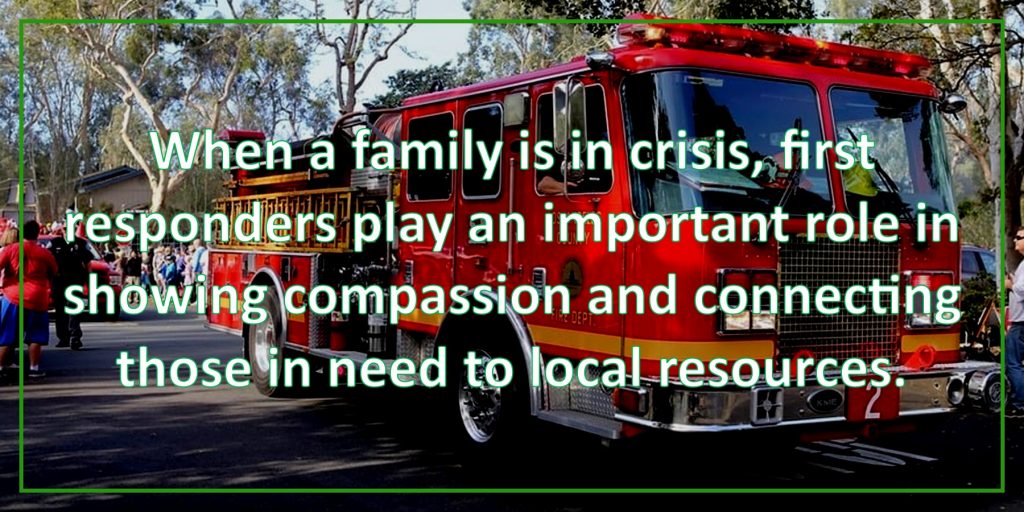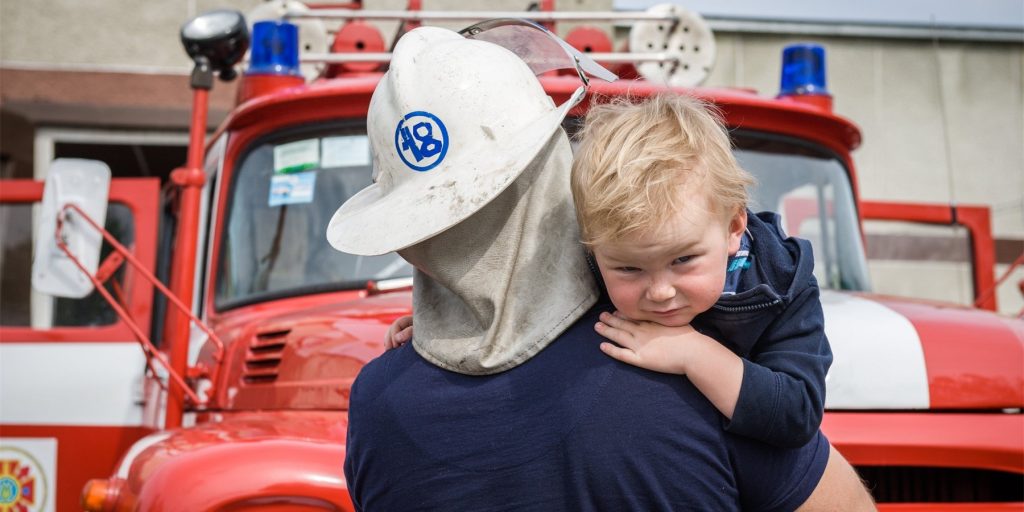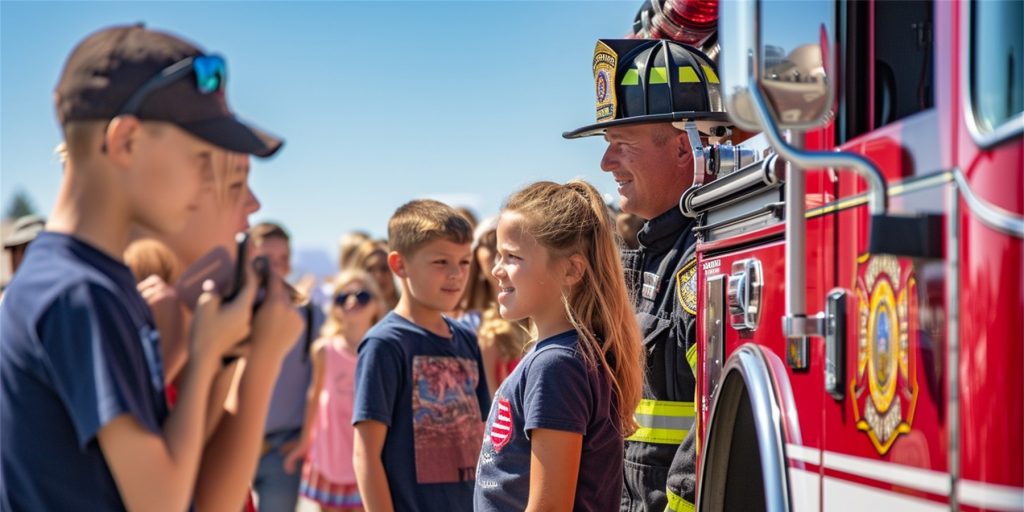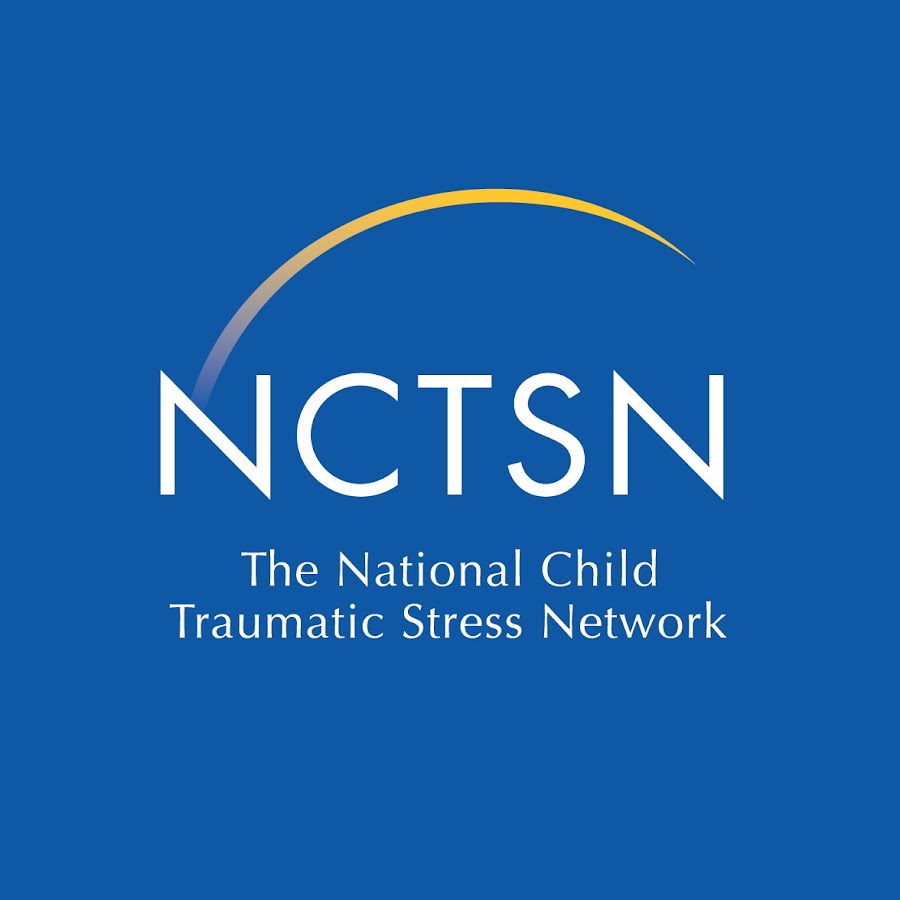You’re often the very first person responding to a crisis that involves child neglect or abuse – or the first one to intervene when a disaster or tragedy strikes a family. You are looked to for compassion and reassurance, and the resources and referrals you share will likely be the first information the family receives.

Your response is key: If families have a good experience with first responders, they are much more likely to reach out for help in the future.
Be the face of the community.
Display your compassion and empathy as you carry out your professional duties.
Don’t forget the kids.
Interact with children or youth if they are present at the scene and it doesn’t interfere with your duties. Children and adolescents describe feeling invisible in times of family crisis, as adult-to-adult interaction is the priority. Even a brief greeting and an exchange of names to show that you know they matter can make a big difference.
Be informed – so that you can inform others.
Have a good working knowledge of resources for children and youth – at school, in the community, etc. – so you can be a source of good information for families. The Humboldt Community Resource List and the North Coast Resource Hub offer a wealth of information on everything from mental health to financial assistance.

Take care of yourself.
Exposure to others’ pain and suffering can cause “Secondary Traumatic Stress” as professionals start to experience symptoms similar to the traumatized person they are trying to help. Learn how to recognize and deal with secondary traumatic stress.
Learn what to look for.
Use the Child Protection Reporting Guide (CPRG) to determine if your concern rises to a level that requires a response from Child Welfare Services. Once you are in the CPRG scroll down and click the “GET STARTED” button. If the CPRG determines that no response by Child Welfare Services is needed you will find links to two resource documents, the Humboldt Community Resource List and the North Coast Resource Hub, on the right hand side bar. Both of these links list multiple services that could support the family you have concerns about.
The Department of Justice has developed a guide specifically for members of law enforcement that outlines how to recognize and deal with cases of child abuse and neglect.
Make connections.
Leave good referral information with the families so they know whom to connect with next. If possible, make a warm referral: Offer to contact the group yourself to connect the family to resources. Connect families with an appropriate Community Pathway Sites, where resources can be accessed. Yes, this is time consuming – but can often yield incredibly positive results for families and decrease isolation.
Learn about trauma-informed practice.

Offer 24/7 resources.
SAMHSA’s Disaster Distress Hotline (1-800-985-5990) provides counseling to people experiencing a natural or human-caused disaster.
Contact Humboldt Domestic Violence Services, 707-443-6042 they can provide help. The National Domestic Violence Hotline , 800-799-7233 also offers supports.
Share Family First – CAPCC on Facebook and spread the word that there are ways to get involved.

